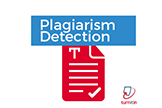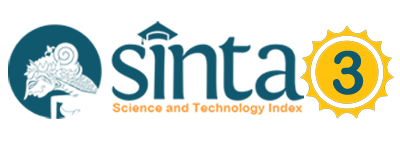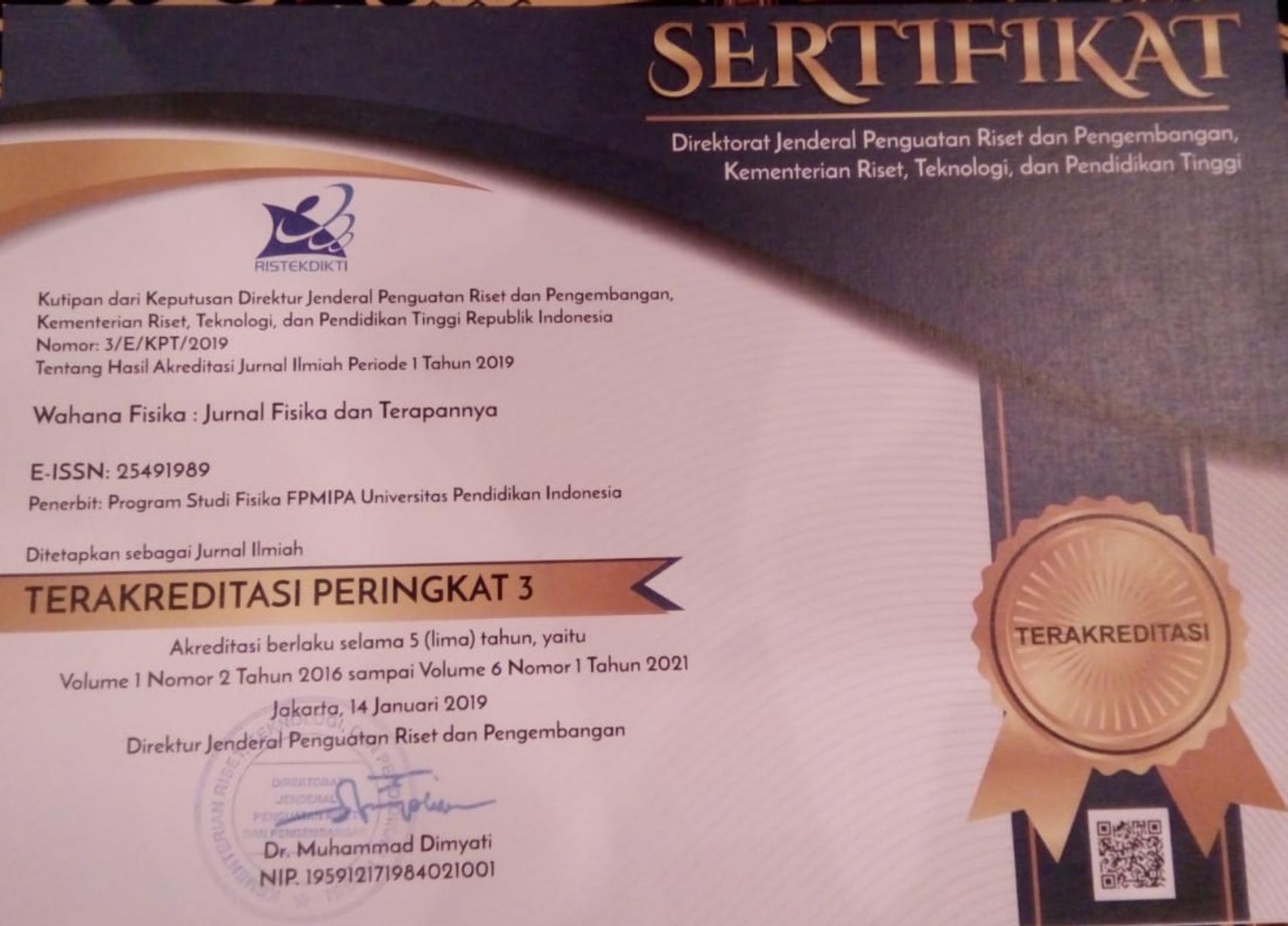Jarak Minimum Orbit dan Tumbukan Populasi Asteroid dekat-Bumi dengan Planet Bumi
Abstract
ABSTRAK
Asteroid dekat-Bumi diketahui memiliki orbit yang kaotik akibat seringnya terjadi papasan dekat dengan planet-planet terestrial. Orbit yang kaotik dapat membuat populasi objek ini berakhir sebagai penumbuk matahari maupun planet-planet. Dalam penelitian ini digunakan 3372 sampel asteroid dekat-Bumi nyata dengan orbit yang dikenal baik (U=0). Evolusi orbit sampel dilakukan dengan memanfaatkan paket integrator Swift_RMVS4 menggunakan model Tata Surya yang terdiri atas Matahari dan kedelapan planet termasuk Bulan sebagai objek terpisah. Propagasi orbit di bawah pengaruh gravitasi dilakukan hingga kurun 2 ´ 106 tahun ke depan dengan langkah waktu komputasi 10-3 tahun (~9 jam). Hingga akhir komputasi diperoleh fluks masuk sampel populasi asteroid dekat-Bumi yang berakhir di zona pembuangan (menumbuk Matahari, terlempar keluar Tata Surya, dan menumbuk planet-planet) adalah sebesar 14 ± 2 asteroid per juta tahun untuk H<18 (bersesuaian dengan diameter asteroid 0,67 km – 1,5 km). Berdasarkan informasi jarak minimum orbit (Minimum Orbit Intersection Distance – MOID) seluruh sampel dengan planet Bumi dengan perhitungan berdasarkan geometri, diperoleh nilai kebolehjadian tumbukan intrinsik (Pi) sebesar 1,099 ´ 10-15 per km2 per tahun per objek yang bersesuaian dengan kejadian satu tumbukan dengan planet Bumi setiap 10 juta tahun. Frekuensi tumbukan yang diperoleh ini lebih singkat daripada yang disimpulkan dari penelitian terdahulu. Penggunaan sampel yang lebih banyak dan dengan kualitas orbit yang lebih baik diduga kuat menjadi faktor penyebab perbedaan.
Near-Earth Asteroids had been known for their chaotic orbits due to frequent close-encounter with Terrestrial planets. These chaotic orbits responsible to their final fate as planets impactor. Within this work, sample of as many as 3,372 real Near-Earth Asteroids with high quaity orbit (U=0) have been used. The Swift_RMVS4 integrator package accomodating the Solar System model consists of all planets and treated the Moon as a separated object was employed. Asteroids’ orbit computation was run for 2 ´ 106 years forward with 10-3years (~9 hours) timestep and only gravitational force was considered. By the end of computation we found the entrance flux from near-Earth region into sinks (collide the Sun or planets and ejected from the Solar System) as many as 14 ± 2 asteroids per million years for H<18 (asteroid’s diameter 0.67 km – 1,5 km). Based on computed asteroid’s minimum orbit distance (Minimum Orbit Intersection Distance – MOID), the intrinsic collision probability (Pi) is 1.099 ´ 10-15 per km2 per year per asteroid which correspond to one impact on Earth every 107 years. This value is lower than previously predicted by other researchers. The use of larger sample with high quality orbits within our work are suspected as the causative difference.
Keywords : Near-Earth Asteroids; Fractional Decay Rate; Collision Rate; MOID.
Full Text:
PDF (Bahasa Indonesia)References
Bottke, W.F., Jedicke, R., Morbidelli, A., Petit, J.M. and Gladman, B. 2000. Understanding the distribution of near-earth asteroids. Science.
Bottke, W.F., Morbidelli, A., Jedicke, R., Petit, J.M., Levison, H.F., Michel, P. and Metcalfe, T.S. 2002. Debiased orbital and absolute magnitude distribution of the near-Earth objects. Icarus, 156, 399–433.
Bottke, W.F., Vokrouhlický, D., Rubincam, D. P. and Nesvorný, D. 2006. The Yarkovsky and YORP effects: implications for asteroid dynamics. Annu. Rev. Earth Planet. Sci., 34, 157–191.
Bottke, W.F., et al. 2016. Massive impact-induced release of carbon and sulfur gases in the early earth’s atmosphere. Earth and Planetary Science Letters 449(2016) 96-104.
Brown, P.G., et al., 2013. A 500-kiloton airburst over Chelyabinsk and and enhanced hazard from small impactors. Nature 503, 238–241.
Davidsson, B.J.R., Rickman, H., 2014. Surface roughness and threedimensional heat conduction in thermophysical models. Icarus 243, 58–77.
Gladman, B., Michel, P. and Froeschlé, C. 2000. The near-earth object population. Icarus, 146, 176–189.
Galad, A., et al. 2005. Probability of Subkilometer Asteroids with the Earth. Contrib. Astron. Obs. Skalnat´e Pleso 35, 65–75.
Galiazzo, M. A., Bazso, A., Dvorak, R. 2014. The Hungaria Asteroids: Close Encounters and Impacts with Terrestrial Planets. Mem. Soc. Astron. Italiana, 26, 38.
Galiazzo, M.A., et al. 2016. V-Type Near-Earth Asteroids: Dynamics, close encounters, and Impacts with Terestrial Planets. German : Astronomiche Nachrichten.
Rickman., et al. 2017. Cometary Imbact Rates on the Moon and Planets during the late Heavy Bombardment. A&A Volume 598.
JeongAhn, Y., Malhotra, R. 2015. The current impact flux on Mars and its seasonal variation. Icarus, 262:140-153.
JeongAhn, Y., Malhotra, R. 2017. Simplified derivation of the collision probability of two objects in independent Keplerian orbits, AJ 153, article id. 235, 11.
Kowalski, A., et al. 2008. The Size Distributions of Asteroid Families in the SDSS Moving Object Catalog 4. Icarus 198, 138-155.
Levison, H.F. and Duncan, M.J. 1994. The longterm dynamical behavior of short-period comets. Icarus, 108, 18–36.
Michel, P., Zappalà, V., Cellino, A. and Tanga, P. 2000. Estimated abundance of atens and asteroids evolving on orbits between earth and sun. Icarus, 143, 421–424.
Morais, M.H.M. and Morbidelli, A. 2002. The population of near-earth asteroids in coorbital motion with the earth. Icarus, 160, 1–9.
Popova, O.P., et al. 2013. Chelyabinsk airburst, damage assessment, meteorite recovery, and characterization. Science 342, 1069–1073.
Rumpf, C. Et al., 2016. On the Influence of Impact Effect Modelling for Global Asteroid Impact Risk Distribution. Acta Astronautica Volume 123.
Utama, Judhistira Aria., et al. 2017. Estimasi Rasio Populasi Asteroid Pelintas Orbit Bumi dari Simulasi Orbital yang Menyertakan Efek Termal. Bandung. Prosiding Seminar Nasional Sains Antariksa.
Utama, Judhistira Aria., et al. 2019. Steady State Scenario in Asteroids Orbital Simulation with Yarkovsky Effect Inclusion. Indonesia. Jurnal oh Physics : Conference Series.
Wisdom J. and Holman M. 1991. Symplectic Maps for the N-Body Problem. Cambridge. Astronomical Jurnal.
Wiśniowski, T. and Rickman, H. 2013. Fast geometric method for calculating accurate minimum orbit intersection distances. Acta Astronomica, 63, 293-307.
Zappala, V., et al. 1996. Phisical and dynamical properties of asteroid families. Italia. Instituto Nazionale di Astrofisica.
DOI: https://doi.org/10.17509/wafi.v5i1.23562
Refbacks
Copyright (c) 2020 Wahana Fisika

This work is licensed under a Creative Commons Attribution-ShareAlike 4.0 International License.
Wahana Fisika e-ISSN : 2549-1989 (SK no. 0005.25491989/JI.3.1/SK.ISSN/2017.02 ) published by Physics Program , Universitas Pendidikan Indonesia Jl. Dr.Setiabudhi 229 Bandung. The journal is indexed by DOAJ (Directory of Open Access Journal) SINTA and Google Scholar. Contact: Here
 Lisensi : Creative Commons Attribution-ShareAlike 4.0 International License.
Lisensi : Creative Commons Attribution-ShareAlike 4.0 International License.






